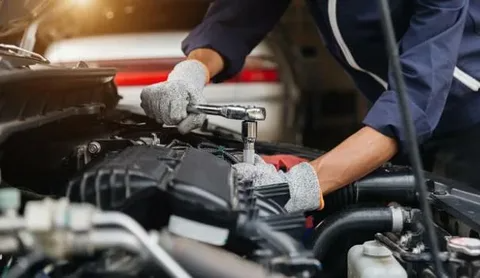Classic cars are more than just vehicles—they’re rolling pieces of history. Whether it’s a pristine 1967 Ford Mustang or a charming Volkswagen Beetle, classic cars capture the imagination of enthusiasts and collectors alike. However, owning one comes with its own set of challenges, particularly when it comes to repairs and maintenance. This article explores the world of classic car auto repair, offering expert insights into best practices, common challenges, and how to find a trusted specialist—while aligning with Google’s 2024/2025 SEO and content quality standards.
Why Classic Cars Require Specialized Auto Repair
Unlike modern vehicles, classic car auto repair near me were built using outdated manufacturing methods, unique components, and often no longer supported technology. That means regular mechanics and diagnostic tools may not be up to the task. Here’s why specialist care matters:
-
Non-standard parts: Original or reproduction parts must match vintage specifications.
-
Manual diagnostics: Many classic cars lack onboard diagnostic systems.
-
Specialized knowledge: Mechanics need historical knowledge and craftsmanship skills.
-
Preservation over modification: Repairs should maintain the vehicle’s authenticity.
According to Hemmings Motor News, an authoritative source for collector car enthusiasts, restoring a classic car improperly can reduce its value by as much as 30%.
Common Repairs and Maintenance Needs
While every vehicle has its quirks, classic cars often face specific repair challenges due to age and design. Here are some common issues:
-
Engine Rebuilding
Decades of use and storage can wear out classic engines. Rebuilding involves disassembling the engine, inspecting each component, and restoring it to factory condition or better. -
Rust Removal and Bodywork
Moisture exposure over time causes rust, especially in vehicles stored improperly. Bodywork can range from patching minor rust to full body panel replacement. -
Electrical System Overhaul
Older electrical systems use outdated wiring and connectors. Many classic car owners opt for a full rewire or replacement of the fuse box to modern standards while maintaining visual authenticity. -
Brake and Suspension Updates
Classic brake systems often use drum brakes, which wear more quickly and perform worse than modern disc systems. Updating these for safety—while maintaining period-correct aesthetics—is common. -
Carburetor and Fuel System Repairs
Unlike modern fuel-injected engines, many classic vehicles run on carburetors that require regular tuning and maintenance. Ethanol in modern fuel can also degrade old rubber fuel lines and gaskets.
How to Choose the Right Classic Car Auto Repair Shop
When it comes to classic car repair, not all garages are created equal. Choosing the right expert is crucial to preserve both value and performance.
🔧 Look for the following credentials:
-
Proven Track Record: Look for shops with experience in your make and model. Check reviews, ask for before-and-after photos, and request references.
-
Certifications: While ASE certification is a good start, additional credentials in classic car restoration, welding, or fabrication are a bonus.
-
Specialization: Shops that focus exclusively on vintage or classic car repair tend to offer better outcomes.
-
Restoration Philosophy: Ask whether the shop prioritizes authenticity, modernization, or a blend of both.
📍 Tip: Ask if the shop sources OEM (original equipment manufacturer) parts or uses reproductions. OEM parts can be harder to find but are often more desirable for collectors.
Costs of Classic Car Repairs
Restoring or repairing a classic cars auto repair is an investment, not a quick fix. Costs vary based on the make, model, condition, and scope of repair. Below is a rough estimate:
-
Minor Repairs (brakes, wiring, tune-up): $500 – $2,000
-
Partial Restoration (interior, paint, engine tune): $5,000 – $15,000
-
Full Restoration (frame-off, mechanical + cosmetic): $25,000 – $100,000+
Keep in mind that classic car value often appreciates after a well-done restoration. According to Hagerty, a classic car insurance company, collector car values have risen nearly 20% in the past five years.
Maintenance Tips to Extend Longevity
Regular maintenance can prevent costly repairs down the road. Here are best practices:
🛢️ Use Classic-Compatible Fluids
Modern engine oils and coolants may not be suitable for vintage engines. Always use fluids recommended for your car’s era or updated alternatives approved by your mechanic.
🔋 Maintain the Battery
Older cars without alternators may drain batteries faster. Use a trickle charger when storing for long periods.
🧼 Protect From the Elements
Store your car in a climate-controlled garage. Invest in a breathable car cover to avoid moisture buildup.
📅 Regular Inspections
Have your car inspected at least once a year by a classic car specialist. This helps spot issues before they become major problems.
🎓 Expert Tip: Drive your classic car regularly. Letting it sit idle for long periods can cause seals to dry out, fuel to degrade, and brakes to seize.
Legal and Insurance Considerations
Classic car insurance differs from standard auto coverage. Companies like Hagerty and Grundy offer policies tailored for collector vehicles, including agreed value coverage, mileage limits, and restoration protection.
Additionally, some regions have restrictions on emissions, roadworthiness inspections, or usage days. Always check local regulations before putting your classic on the road.
Finding Parts for Classic Car Repair
Sourcing parts is often the most challenging aspect of classic car repair. Here are some trusted sources:
-
Original Equipment Manufacturers (OEMs): For authenticity.
-
Reproduction Parts Suppliers: Brands like Year One and Classic Industries.
-
Salvage Yards: Especially useful for rare or discontinued models.
-
Online Marketplaces: eBay Motors, Hemmings Classifieds, and Bring a Trailer.
-
Enthusiast Forums and Clubs: These often have private sales, parts swaps, and leads on hard-to-find items.
Digital Advancements in Classic Car Restoration
While classic cars are old, modern tools can enhance the repair process:
-
3D Printing: Used to recreate rare plastic parts or bezels.
-
CAD Software: Helps restore panels or rebuild mechanical parts with precision.
-
Digital Paint Matching: Ensures period-correct color replication.
Conclusion
Classic car auto repair isn’t just a mechanical task—it’s an art form that bridges past and present. Whether you’re a seasoned collector or a new enthusiast, investing in quality repairs ensures your vehicle continues to turn heads and retain its value for years to come. By working with knowledgeable specialists, staying proactive with maintenance, and choosing the right restoration path, you can keep your classic car in show-stopping condition.






